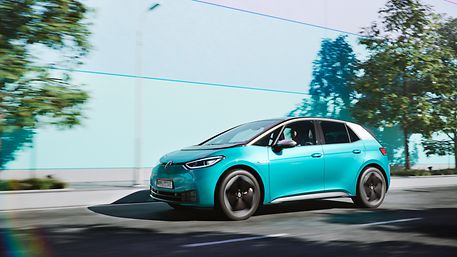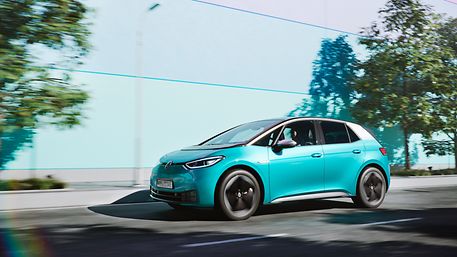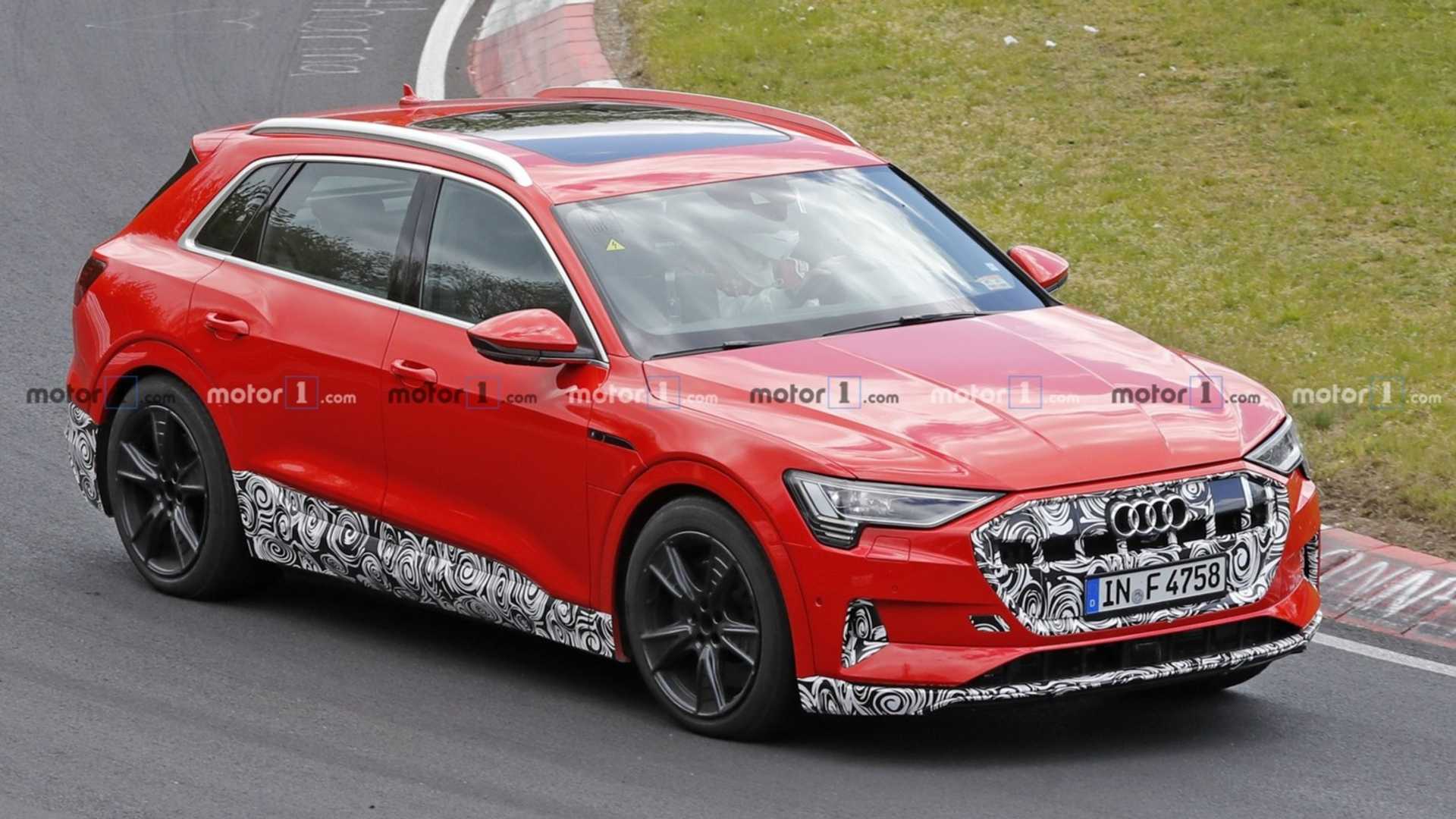Tata Group, the owner of Jaguar Land Rover, has approached carmakers including China’s Zhejiang Geely Holding Group Co. and BMW AG as it seeks partnerships for the beleaguered British automotive business, people with knowledge of the matter said. India’s largest conglomerate has said it’s open to finding partners for JLR to save on costs and… Continue reading Jaguar Land Rover parent Tata approaches BMW, Geely in search for partners
Tag: VW
Porsche SE: Group profit after tax increases in the first nine months to 3.52 billion euro
de
Continental Vehicle Server Connects VW ID. Electric Vehicles
Continental‘s new server concept is a central element for the conversion to a service-oriented electronics architecture in highly connected ID. electric cars Volkswagen uses the server as an in-car application server (ICAS1) for ID. vehicle models based on the modular electric drive matrix (MEB) High computing power and a consistent separation of hardware and software… Continue reading Continental Vehicle Server Connects VW ID. Electric Vehicles
Continental Delivers Solid Operational Performance in Weak Market Environment
Sales up 3 percent in the third quarter to €11.1 billion (down 0.3 percent organically) Adjusted EBIT of €615 million (margin: 5.6 percent) Net income in the third quarter of -€1.99 billion due to previously announced one-time effects from goodwill impairment and provisions Adjusted targets for the year as a whole confirmed CEO Dr. Degenhart:… Continue reading Continental Delivers Solid Operational Performance in Weak Market Environment
Tatas Group begins hunt for a partner for Jaguar, approaches Geely & BMW
India’s largest conglomerate has said it’s open to finding partners for JLR to save on costs and share the burden of investing in electric vehicles. By Siddharth Philip, P R Sanjai, Zhang Dingmin and Elisabeth Behrmann Tata Group, the owner of Jaguar Land Rover, has approached carmakers including China’s Zhejiang Geely Holding Group Co. and… Continue reading Tatas Group begins hunt for a partner for Jaguar, approaches Geely & BMW
Live stream: World Premiere of the new ŠKODA OCTAVIA
The press conference can be watched live on ŠKODA Storyboard and the brand’s social media channels. Media agencies can also broadcast the transmission via embed code on their own channels. The world premiere will be broadcast in English, German and Czech. Date: Monday, 11 November at 19:00 CETŠKODA Storyboard: http://www.skoda-storyboard.comYouTube: https://www.youtube.com/watch?v=VFHgFfeYZQ8Twitter: https://twitter.com/skodaautonewsFacebook: https://www.facebook.com/skoda/ [embedded content] Follow… Continue reading Live stream: World Premiere of the new ŠKODA OCTAVIA
Teslas = 77.7% of US Electric Vehicle Sales
Invest
Electric Cars
Electric Car Benefits
Electric Car Sales
Solar Energy Rocks
RSS
Advertise
Privacy Policy
Cars
Published on November 10th, 2019 |
by Zachary Shahan
Teslas = 77.7% of US Electric Vehicle Sales
Twitter
LinkedIn
Facebook
November 10th, 2019 by Zachary Shahan
The US electric vehicle market is … not the most interesting. Unfortunately, we have only one mass-market electric vehicle on the market, and there are very few models available across the nation. Actually, aside from Tesla’s offerings, I think there are only two fully electric models available at dealers in all 50 states — the Chevy Bolt and Nissan LEAF. I’ll discuss them a bit more later in this article in order to try to explain why their sales are so dismal despite that wide availability. A note on data first, though:
Deciding whether or not to run these monthly US EV sales reports is a frequent conundrum, since the official data is limited (many automakers don’t publish monthly numbers, if at all) but the reports can also be quite popular and do help to put the US EV market into perspective on an ongoing basis. I decided not that long ago to discontinue the monthly reports and only publish quarterly reports, but our friends at EV Volumes just offered to provide us with their US Tesla estimates to help out with these reports and I decided that was enough to get back into the game. I track official numbers from other automakers on a monthly basis anyway.
That said, we don’t have official monthly data for the following models, so the data I use for them are estimated guesses based on historical sales data: Chevy Bolt, Fiat 500e, Honda Clarity EV, Hyundai Ioniq EV, Hyundai Kona EV, Kia Niro EV, and Jaguar I-PACE. Also, note that this report does not include plug-in hybrids, in part because we cannot get sales numbers for most plug-in hybrids and in part because we think it’s time (the technology is ripe) to evolve past “electrified” models to fully electric models.
With all of that out of the way, on to the numbers. Based on all of our number crunching, the Tesla Model 3 accounted for 59% of US electric vehicle sales in October and 62% in the year through October.
Tesla as a whole accounted for 75% of US EV sales in October and 78% (77.7%) in January–October.
That doesn’t leave many sales highlights from other models. The Chevy Bolt comes in with 10% of sales, the Nissan LEAF 6%, the Volkswagen e-Golf 4%, and the Audi e-tron 3% in October. For the first 10 months of the year, the Bolt accounted for about 7% of sales, the LEAF 5%, and the e-Golf and e-tron 2% each.
The Bolt and LEAF both have long range, good tech, and are available across the country. They are solid electric cars that I think do outcompete other cars available for under $30,000. However, they suffer from several challenges:
They are close in price to the base Tesla Model 3, and many EV buyers heavily prefer the Model 3.
The MSRP of these cars is often notably higher than the MSRP of similarly styled gasoline cars from those companies. (Consumers may not think to do a total cost of ownership analysis, or may not have the ability to get financing for this price of car at all.)
Auto dealers generally don’t want to sells EVs, and often just have a show model or two tucked away in the shadows somewhere.
Nissan and Chevy have been marketing their goods, but they don’t have nearly the customers enthusiasm or fan base that Tesla vehicles have, and the marketing has been minimal compared to other models in their fleets.
Limited availability might be a problem from time to time.
If more consumers find out about the total cost of ownership benefits of a Bolt of LEAF, and notice attractive local-dealer discounts while remembering these models still benefit from the US federal tax credit, you could see a consumer sprint to get more of these models before year-end. Or not.
On the top of the market, since the Tesla Model 3, objectively, is a better vehicle in many key ways than other gasoline vehicles in the $35,000–67,000 price range, we expect sales to continue to be sky high indefinitely. We don’t even see a genuine competitor anywhere on the horizon, unless you count the Model 3’s coming crossover sibling, the Model Y.
If you’d like to buy a Tesla Model 3, Model S, or Model X and want 1,000 miles of free Supercharging, feel free to use my referral code: https://ts.la/zachary63404 — or use someone else’s if you have a friend or family member with a Tesla who has helped you more. The referral code can also be used for a $100 discount on Tesla solar.
Follow CleanTechnica on Google News.
It will make you happy & help you live in peace for the rest of your life.
About the Author
Zachary Shahan is tryin' to help society help itself one word at a time. He spends most of his time here on CleanTechnica as its director and chief editor. He's also the CEO of Important Media. Zach is recognized globally as an electric vehicle, solar energy, and energy storage expert. He has presented about cleantech at conferences in India, the UAE, Ukraine, Poland, Germany, the Netherlands, the USA, Canada, and Curaçao.
Zach has long-term investments in Tesla [TSLA] — after years of covering solar and EVs, he simply has a lot of faith in this company and feels like it is a good cleantech company to invest in. But he offers no investment advice and does not recommend investing in Tesla or any other company.
Back to Top ↑
Advertisement
Advertise with CleanTechnica to get your company in front of millions of monthly readers.
Top News On CleanTechnica
CleanTechnica Clothing & Cups
Join CleanTechnica Today!
Listen to CleanTech TalkAdvertisement
Advertisement
Follow CleanTechnica Follow @cleantechnica
© 2019 Sustainable Enterprises Media, Inc.
Invest
Electric Cars
Electric Car Benefits
Electric Car Sales
Solar Energy Rocks
RSS
Advertise
Privacy Policy
This site uses cookies: Find out more.Okay, thanks
Audi E-Tron S Possibly Spied Testing At The Nurburgring Again
The new rear diffuser is a bit of a giveaway. We first spied a hotter version of the Audi E-Tron in May when our spy photographers caught the E-Tron S at the Nürburgring. We haven’t seen it since then. However, a new video shows what appears to be the Audi E-Tron S again at the… Continue reading Audi E-Tron S Possibly Spied Testing At The Nurburgring Again
Mercedes moves to overtake Audi in China car sales
Volkswagen-owned marque falls out of favour after three decades at the top Go to Source
Audi to launch Q8 in India in January
NEW DELHI: German luxury carmaker Audi will bring its flagship SUV Q8 in India in January next year as part of its strategy to strengthen presence in the country by 2025. The company has already started taking orders for the vehicle from the weekend as it looks to re-enter the top end of the luxury… Continue reading Audi to launch Q8 in India in January



